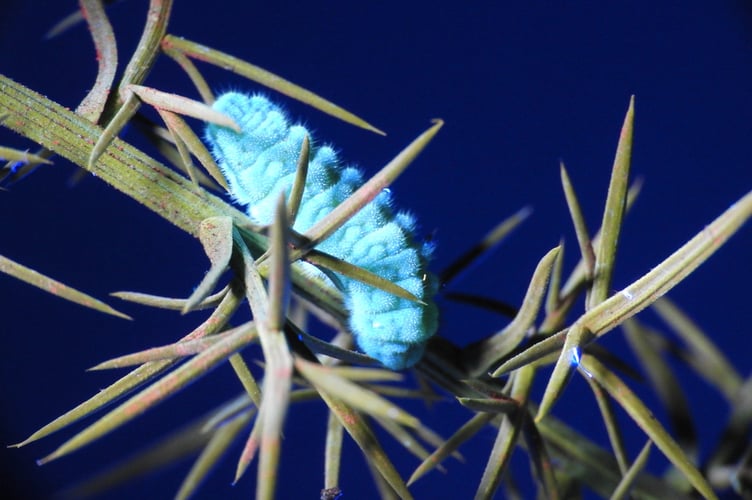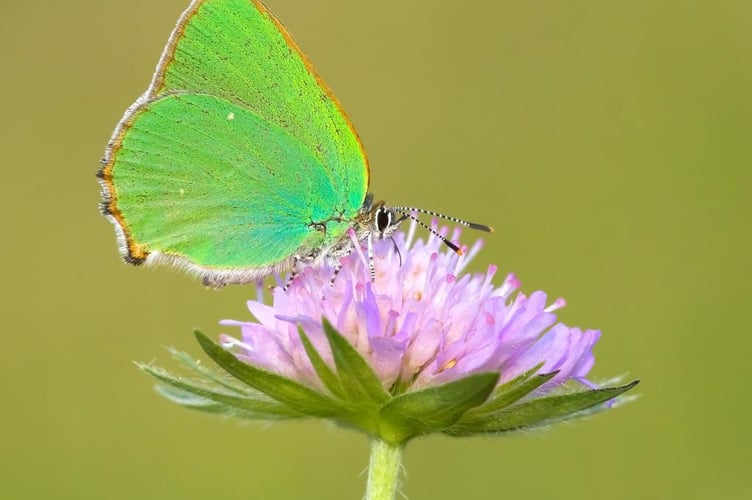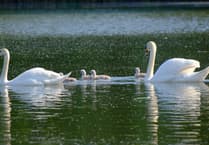
Surely there can be few readers who haven’t been fascinated by the use of ultraviolet light, which is invisible to our eyes but causes certain inks and dyes to glow (fluoresce).
It is often used to create effects in showbiz – from theatres to disco lighting – and is a fascination for children, especially when used for “invisible” writing, whereby a special pen uses an ink that is invisible to our eyes, but which glows (fluoresces) under an ultraviolet lamp.
I was fascinated recently to hear of a unique new conservation project where butterflies and their caterpillars are being detected using ultraviolet lighting, which makes the creatures glow.
The technique has never before been widely used to collect official statistics; experts say it could make surveying butterflies and moths significantly quicker and easier and reveal hidden secrets about their behaviour and evolution.
Presently, conservationists rely on daytime surveys for rare and endangered species, which often means trying to spot a dark brown butterfly high up in a tree.
Steven Lofting, conservation manager for the Butterfly Conservation charity, said: "This could be a game-changer. It has the potential to change our understanding of their biology, distribution, abundance and ecology. It's really exciting."
Steven led the first training session in Buckinghamshire for volunteers and staff of Berks, Bucks & Oxon Wildlife Trust (BBOWT).
On this occasion the group were specifically looking for caterpillars of the UK's five species of hairstreak butterfly: the black hairstreak is endangered, the brown hairstreak and white-letter hairstreak are both vulnerable, and green hairstreak and purple hairstreak have also declined in abundance and distribution since the 1970s.
Butterfly Conservation and BBOWT have surveyed hairstreaks for decades, but the techniques have been slow and painstaking, with teams of dedicated volunteers going out in the middle of winter to look for tiny, pinhead-sized eggs on twigs using magnifying glasses.
In the new technique, all volunteers have to do is shine an ultraviolet light (UV) into bushes and trees which makes the luminous larvae gleam as if they are producing their own light – an effect known as photoluminescence.
Caterpillars of many other butterflies and moths also glow under UV light but the technique is so novel that scientists still don't have a full list of which ones.
Butterfly Conservation is now asking volunteers across the country to go out with UV lights and start submitting their findings to illuminate this new field of ecology: for guidance visit the web page at the end of this article.
Pete Hughes of Butterfly Conservation told me that their second UV surveying training session was held last Monday (2 June) at Butterfly Conservation’s Bentley Station Meadow nature reserve.
“It won’t be the last,” said Pete. “People wishing to find out more can get in touch with our Surrey and SW London Branch – their contact details are on our website: butterfly-conservation.org”.
The charity stresses that surveying butterflies is especially important for conservation because they are an “indicator species”: rises and falls in their populations can predict the health of the wider ecosystem.
Official figures from the UK Butterfly Monitoring Scheme released at the beginning of April revealed that 2024 was the fifth worst year for UK butterflies since the scheme began in 1976, and more than half of species were in long-term decline.
For more details of “glow in the dark” caterpillars and how to survey them, visit Butterfly Conservation’s web page: butterfly-conservation.org/uv





Comments
This article has no comments yet. Be the first to leave a comment.